Vermont has a variety of bees that are distinctly black and yellow. Most are in the family Megachilidae, including two introduced species of Wool Carder that are widespread and common. A few bees in the group are rare native species and a few others are recently introduced to North American and may spread to Vermont soon.
Known from Vermont
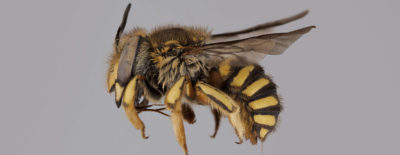
European Wool Carder Bee (Anthidium manicatum)
This is a common introduced species, males of which vigorously defend their preferred flower patch - often garden plants in the mint family.
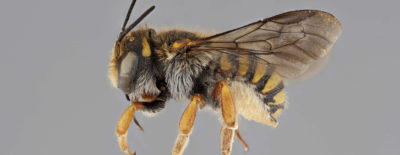
Oblong Woolcarder Bee (Anthidium oblongatum)
Another introduced species that is slightly smaller than the European Wool Carder Bee with a distinct preference for Bird's-foot Trefoil (Lotus corniculatus).
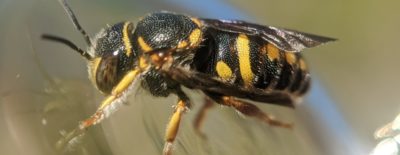
Northern Rotund-resin Bee (Anthidiellum notatum)
An small, uncommon, native species that appears to be confined to the warmer portions of the state.
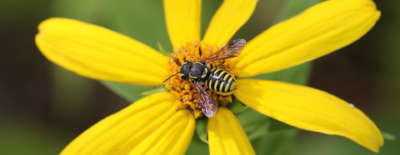
Sunflower Burrowing-Resin Bee (Paranthidium jugatorium)
Only known from a few locations, this native species is usually associated with Woodland Sunflowers (Helianthus divaricatus). Image courtesy Spencer Hardy.
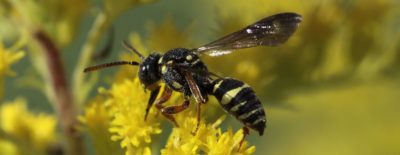
Tifton Nomad Bee (Nomada tiftonensis)
One of a small number of fall Nomad Cuckoo Bees (Nomada) that are black and yellow, though unrelated and with a different body plan than the other species here. Image Courtesy Michael Veit

Northeastern Pebble Bee (Dianthidium simile)
This is a very rare native species only found a few times recently in the northeast. Likely tied to lakes shore sand and active late summer and early fall. One VT record from 1972.
Not Yet Found in Vermont
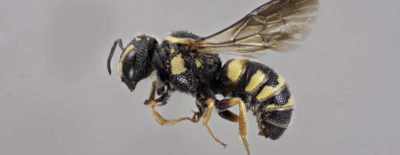
Louisiana Painted-Dark Bee (Stelis louisae)
This is a cleptoparasitic species so far unrecorded from VT, but one of its hosts the Bellflower Resin Bee (Megachile campanulae) is frequently found in on bellflowers around the state, including in gardens.
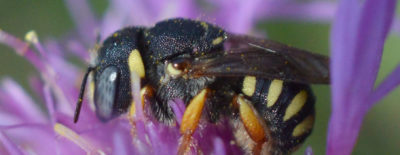
European Small-Woolcarder (Pseudoanthidium nanum)
This small, summer species is spreading though East Coast cities, and is as close as Boston as of spring 2021. Image Courtesy Dimitǎr Boevski
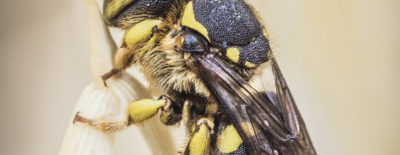
Florentine Wool-carder Bee (Anthidium florentinum)
This species is quite similar to the European Wool Carder Bee (Anthidium manicatum), and recently discovered in and around Montreal. Likely to be found in an urban garden in Chittenden or Franklin county soon. Image courtesy iNaturalist user: juanvi
Unless otherwise specified, photos are courtesy of Margarita Miklasevskaja at PCYU with funding from NSERC-CANPOLIN.






